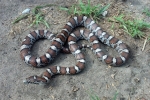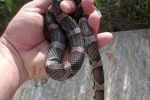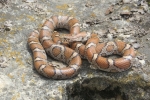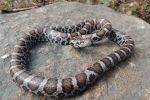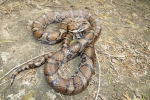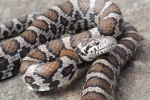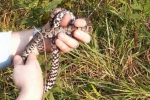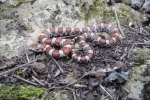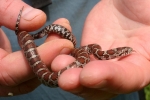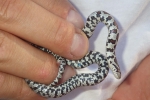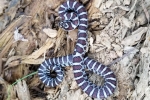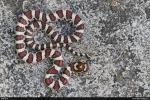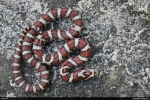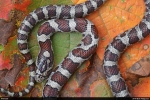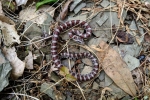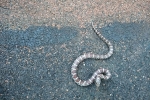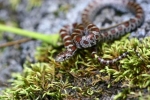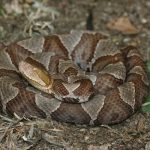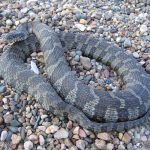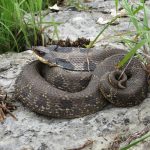Eastern Milksnake
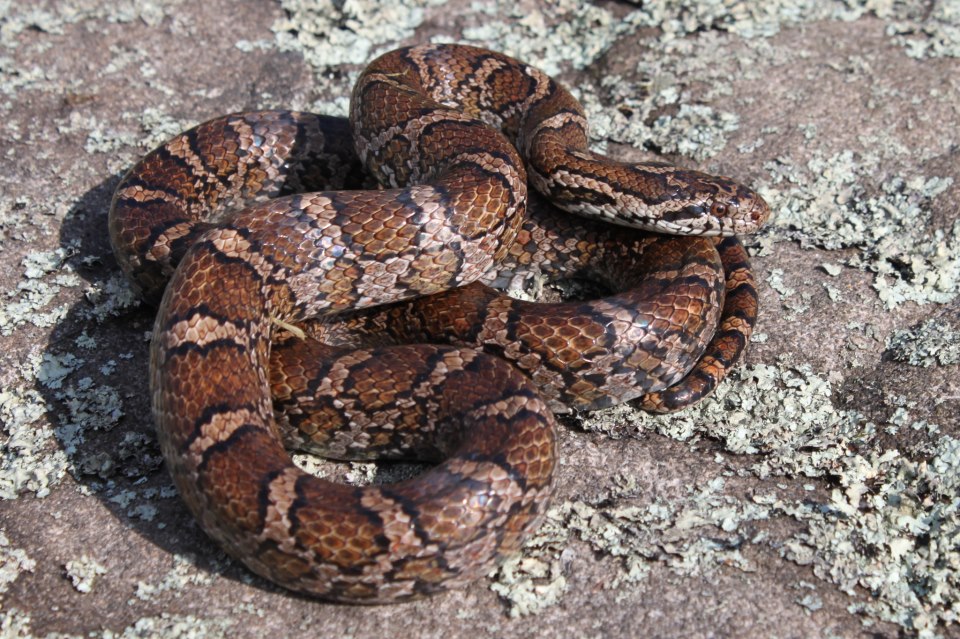
Scientific Name: Lampropeltis triangulum triangulum
Size: 24-52 in. (61-90 cm) in length
Status: Abundant
Habitat:
Open country, ecotones, human habitats, road-cuts, powerline right-of-ways, rocky hillsides, bog borders, and deciduous forest. May be found under cover objects, rocks, logs, boards, tin, or other building debris.
Description:
Medium sized species with smooth scales and a small, blunt head that is slightly distinct from the body. Adult milk snakes vary in coloration and pattern. The background color of the upper body can range from gray, beige, gray-brown, olive brown, or pinkish brown to red. The strong body pattern has 30-47 large squarish blotches with smaller alternating row of lateral blotches on the sides. These blotches vary from light to dark brown or reddish brown and are bordered by a thin black line.
One sure way to identify a milksnake is by the "V", "U" or "Y" shaped blotch that is found on the back of the head. The belly background color is white to beige with black square markings giving it the look of a checkerboard. Young are similar to adults, but with a more vivid coloration. The blotches are usually a brighter red to orange-brown. This pattern usually gets darker and duller as it ages.
The Milksnake is often confused with the Northern Copperhead.
- The dorsal background can be grey, beige, grey-brown, olive brown, or pinkish brown to red.
- The strong dorsal pattern has 30-47 large squarish blotches with smaller alternating row of lateral blotches on the sides.
- Blotches vary from light to dark brown that are bordered by black.
- There is a “V”, ”U” or “Y” shaped blotch anteriorly onto the head.
- The ventral background is white to beige with black square markings giving it the look of a checkerboard.
- A solid line runs from the posterior margin of the eye to the angel of the mouth.
- A narrow black bar generally extends across the prefrontals.
- The head has a light tan or light brown background color that becomes lighter on the suparlabials.
- The chin is white to cream with dark markings along the edge of the infralabials.
- PA has a number of albino individuals recorded.
- Medium-sized species.
- Scales are smooth.
- The head is small, blunt and slightly distinct from the body.
- Similar to adults.
- Blotches are brighter red to orange-brown.
- 21 scale rows at mid-body
- 19-27 anterior rows
- 135-244 ventral scales
- 21-78 subcaudals | 2 rows of subcaudals
- 2 nasal scales
- 1 loreal scale
- 1 preocular scale
- 2 postocular scales
- 1-2+2 temporal scales
- 7 supralabials
- 8-9 infralabials
- Anal plate is undivided


References:
- Hulse, C. and McCoy C. J. and Ellen Censky ,1998. Amphibians and Reptiles of Pennsylvania and the Northeast. 297-301pp.
- Ernst, Carl H. and Ernst, Evelyn M. ,2003. Snakes of the United States and Canada. 246-254pp.
- Jason Poston
- Billy Brown
- Rex Everett
- Kyle Loucks
- Bob Ferguson
- Sebastian Harris
- Don Becker(psychoticnature.com)
- Ed Patterson
- Andy Weber
Heads up!
Please contribute your observation of this and other herps to the Pennsylvania Amphibian and Reptile Survey. Your help is needed.
